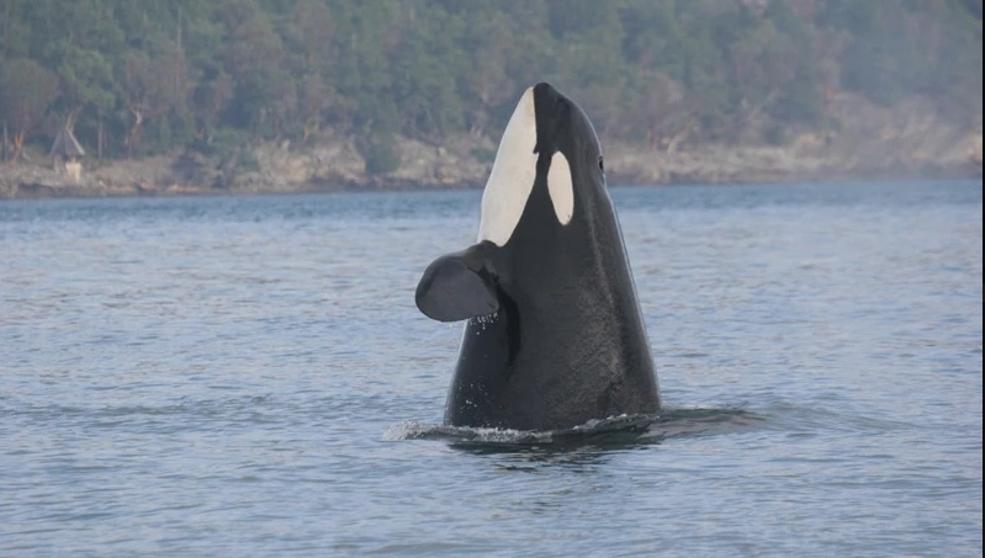Where's 'Granny'? Oldest Orca Is Missing, and the Worst Is Feared

A killer whale thought to be over 100 years old and known affectionately as "Granny" has not been sighted in several months and is thought to be deceased.
The orca was described as "officially missing" from the local population — and likely dead, as she had not been seen since Oct. 12, 2016 — in a memorial post shared online Dec. 31, 2016, by marine biologist Ken Balcomb, a principal investigator at the Center for Whale Research (CWR) in Washington.
Granny was identified as "J2" decades ago by CWR scientists who studied her pod of so-called Southern Resident killer whales in Puget Sound, a Pacific Ocean inlet off the coast of Washington. Balcomb first observed J2 in 1976, and continued to observe her over the next 40 years, describing her in his memorial as "the energizer bunny" who just kept going and going, despite her remarkably advanced age. [Orca Gallery: See Gorgeous Photos of Killer Whales]
Female killer whales are much longer-lived than their male counterparts, with a life span that can exceed males' by decades. Male orcas have an average life span of about 30 years, but can live as long as 50 years. However, a female orca's typical life span is around 50 years, and they can live to be at least 100, according to a species description by the National Marine Fisheries Service (NMFS).
But it is highly unusual for scientists to have the opportunity to observe a single orca in the wild over many decades as it ages. Granny had a distinctive nick in her dorsal fin that helped scientists to recognize her quickly and track her over time. In fact, she and her pod were instrumental in establishing that orcas had unique patterns and fin features that could be used by researchers to identify them, Balcomb explained.
"A closed-saddle female"
In 1976, she was described as "a closed-saddle female that has a small nick halfway down on the trailing edge with a finger-size tag of tissue protruding upward from the bottom of the nick," by marine biologist Michael Bigg, who pioneered individual whale identification through observation, Balcomb recalled.
Her age was approximated to be at least 45 years old and possibly 76 years old in 1987. By those estimates, her age in 2016 would have been at least 74 years old and perhaps as much as 105 years old. Either way, she was the oldest known Southern Resident killer whale — the only known resident population of killer whales in the United States, inhabiting waters near British Columbia and Washington.
Sign up for the Live Science daily newsletter now
Get the world’s most fascinating discoveries delivered straight to your inbox.
Granny was one of dozens of orcas divided among three pods — nicknamed "J," "K" and "L" — Dawn Noren, a research fishery biologist at the National Oceanic and Atmospheric Administration (NOAA) Northwest Fisheries Science Center in Seattle, told Live Science in 2016. As of Dec. 31, 2016, an estimated 78 Southern Resident killer whales remain in total, with Granny's "J" pod holding 24, Balcomb wrote in the memorial.
And while it's possible that Granny may turn up again, after a months-long absence, it isn't very likely, Balcomb said.
"Perhaps other dedicated whale-watchers have seen her since then, but by year's end she is officially missing from the SRKW [Southern Resident killer whale] population, and with regret we now consider her deceased," he added.
Original article on Live Science.

Mindy Weisberger is an editor at Scholastic and a former Live Science channel editor and senior writer. She has reported on general science, covering climate change, paleontology, biology and space. Mindy studied film at Columbia University; prior to Live Science she produced, wrote and directed media for the American Museum of Natural History in New York City. Her videos about dinosaurs, astrophysics, biodiversity and evolution appear in museums and science centers worldwide, earning awards such as the CINE Golden Eagle and the Communicator Award of Excellence. Her writing has also appeared in Scientific American, The Washington Post and How It Works Magazine. Her book "Rise of the Zombie Bugs: The Surprising Science of Parasitic Mind Control" will be published in spring 2025 by Johns Hopkins University Press.










